A Complete Guide to Customer Engagement
Published on March 31, 2023/Last edited on November 13, 2024/25 min read
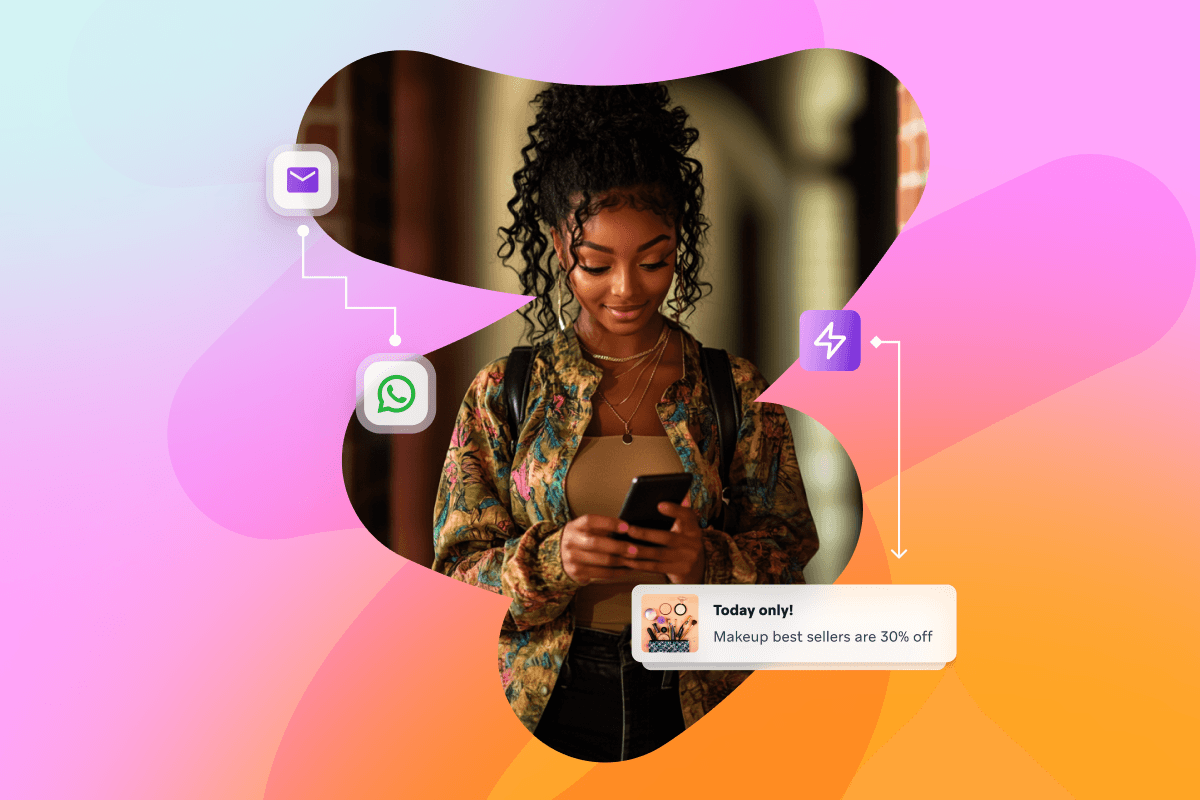

Team Braze
Effective customer engagement is earned by delivering valuable experiences across channels while respecting customer privacy. The companies who do this best use data-powered customer engagement technology to listen to their audience, see what they respond to, and take action in real time to improve the experience.
But what exactly is customer engagement? What does an effective strategy look like, and what impact can it have? In this guide, we’ll walk you through:
- What is customer engagement?
- Why is customer engagement important?
- Customer engagement vs CRM: What’s the difference?
- 5 real-life examples of customer engagement
- How to create a best-in-class customer engagement campaign
- Top 5 customer engagement metrics to measure
- 3 ways a customer engagement platform maximizes your results
- Top customer engagement FAQs
- Featured customer engagement resources
What Is Customer Engagement?
Customer engagement is the practice of building and maintaining direct, meaningful relationships with customers. It’s an evolution of traditional marketing that brings together multiple business functions to understand and engage customers across their entire journey with a brand's product, service, and promise.
Customer engagement is all about building and nurturing relationships with consumers. Ultimately, this strategy is a win-win, resulting in both loyalty and business growth. By taking the time to understand their unique needs, businesses drive better outcomes. Customer engagement can look like anything from personal, highly relevant email campaigns to responsive, multi-step customer journeys based on purchase behavior and/or preferences—the possibilities are endless, and the methods effective.
So, what’s holding companies back from achieving best-in-class customer engagement? The reality is that many brands struggle to define customer engagement and don’t understand what it takes to implement a great strategy. Yet the stakes are high. For one, acquiring new customers is incredibly expensive; 30% of marketers report average-to-no returns on their investment. Second, there’s compounding pressure on companies to nurture connections that are already established. Even for leading brands, this is not easy. The marketplace is loud and crowded, and it’s difficult to navigate the vast amounts of data available before Google eliminates third-party tracking cookies. Lastly, marketing technology has exploded in recent years, making it confusing for companies trying to decide which platforms are worth their investment.
Why is Customer Engagement Important?
Customer engagement is important because it recognizes that consumers are in control of their own journeys, choosing when and how to interact with brands. In today's digital landscape, customers engage with multiple organizations through various channels, from social media to in-person experiences. This shift means that brands must adapt their strategies to meet consumers where they are, delivering relevant and consistent experiences at every touchpoint.
Effective customer engagement fosters trust and builds relationships by personalizing interactions based on individual preferences and behaviors. Brands that excel in customer engagement not only capture consumer attention but also drive loyalty and advocacy. Research shows that companies with strong customer engagement practices are more likely to exceed their revenue goals, highlighting the direct link between engagement and business success. In a competitive marketplace, prioritizing customer engagement is essential for brands that want to thrive and stand out.
Here are five reasons why customer engagement should be a priority for businesses in all industries.
- Customer engagement drives brand loyalty. Brand loyalty often makes the difference between stagnation and growth, and 88% of consumers say it takes three or more purchases to build loyalty. Brands must deliver 1:1 experiences that leverage data, interpret data, personalize experiences, and engage customers directly.
- Customer engagement increases lifetime value. What’s the only thing better than acquiring a new customer? Keeping the ones you already have. Increasing customer retention by 5% can increase profits up to 95%. After all that hard work winning customers over, customer engagement helps you reduce costs by effectively retaining them. For instance, encouraging more persistent interactions with your brand via personalized recommendations provides valuable insight into which segments need re-engagement before churning.
- Customer engagement unlocks higher ROI. Knowledge is power. Marketing budgets are optimized when you know which activities move the needle most. The right customer engagement platform helps businesses understand how consumers interact with them, which channels are best for specific types of messages, and which campaigns successfully meet goals.
- Customer engagement activates word-of-mouth marketing. An effective customer engagement strategy inspires new customers to become brand advocates. Ultimately, this aids future acquisition efforts. From social media ads to incentive-driven referral programs, a customer engagement platform can unlock creativity to ensure no brand endorsement is overlooked.
Customer Engagement vs. CRM: What’s the Difference?
While “customer engagement” and “customer relationship management” (CRM) sound similar, these are two distinct concepts. A customer engagement platform (CEP) prioritizes engagement, while a CRM prioritizes management. The two goals support one another, but they’re fundamentally different.
What’s a customer relationship management (CRM) system?
The utility is in the name. A CRM system helps businesses manage customer relationships and collects information that can be used to help nurture the relationship. A CRM acts as a centralized record of all customer interactions, including contact information, marketing preferences, purchase history, and possibly requests for support. CRM software helps sales and support teams automate outreach records and stay on the same page. Some CRMs also have messaging capacity, enabling mass email sends to specific customer segments.
What’s a customer engagement platform (CEP)?
A CEP orchestrates data-informed customer engagement across multiple channels, including email, mobile push, WhatsApp, and more. A CEP also aggregates data so businesses can act on it, segmenting users to ensure brand experiences are relevant and cohesive. While a CRM might give you information before you jump on a call with a prospect, a CEP allows you to execute and automate messaging campaigns at scale—all while reducing intrusive interactions. A winning CEP is an all-in-one solution for orchestrating customer journeys, delivering them across channels, and optimizing messages with first- or zero-party data. Centralizing your customer engagement in one place is vital because it helps you segment, personalize, and deploy messages to customers based on a number of factors, like channel preferences, purchases made, and promotions acted on.
Customer Engagement Vs. CRM Campaign Examples
Now that we’ve established how a CEP differs from a CRM, let’s dive into how campaigns look for each.
Customer relationship management campaign example
1. Fictional financial services company, Pyrite Financial, is on top when it comes to helping people keep their money safe (including on mobile). But recently, they noticed a gap in their growth strategy, especially in terms of managing B2B outreach and winning large accounts.
2. Pyrite Financial had many sources of truth. The company’s growth team consistently sent batch-and-blast emails to everyone on their list because they couldn’t segment users. All they had were email addresses, so outreach was hit-or-miss.
3. Pyrite Financial’s team noticed in their audit that they weren’t tracking who they previously contacted. This meant they sometimes sent the same (or similar) messages to users two or three times. This was a bad experience for those customers and certainly didn’t help close any deals.
4. To solve the issue, Pyrite Financial sought a CRM that would effectively centralize all customer information into one place.
Customer Engagement Platform Campaign Example
1. MovieCanon is a fictional upstart streaming service that recently gained serious market share. However, when the company expanded into original programming, they faced a challenge promoting the content. They also identified opportunities where they could reduce churn, which increased as they grew.
2. First, MovieCanon dug into the consumer data they already had from their CRM. This included customer names and common contact info, like email addresses—data critical to building an activation-focused customer journey.
3. Next, they mapped out an entire customer lifecycle stage using their CEP’s customer journey orchestration tool. Within the first two weeks of signing up for MovieCanon, users saw the app’s most popular content and new series’ recommendations. These are the types of rich experiences that build better relationships with users over time.
4. To directly target inactive customers at risk of churning, they sent messages personalized to the user’s viewing history, including recommendations based on their favorite shows.
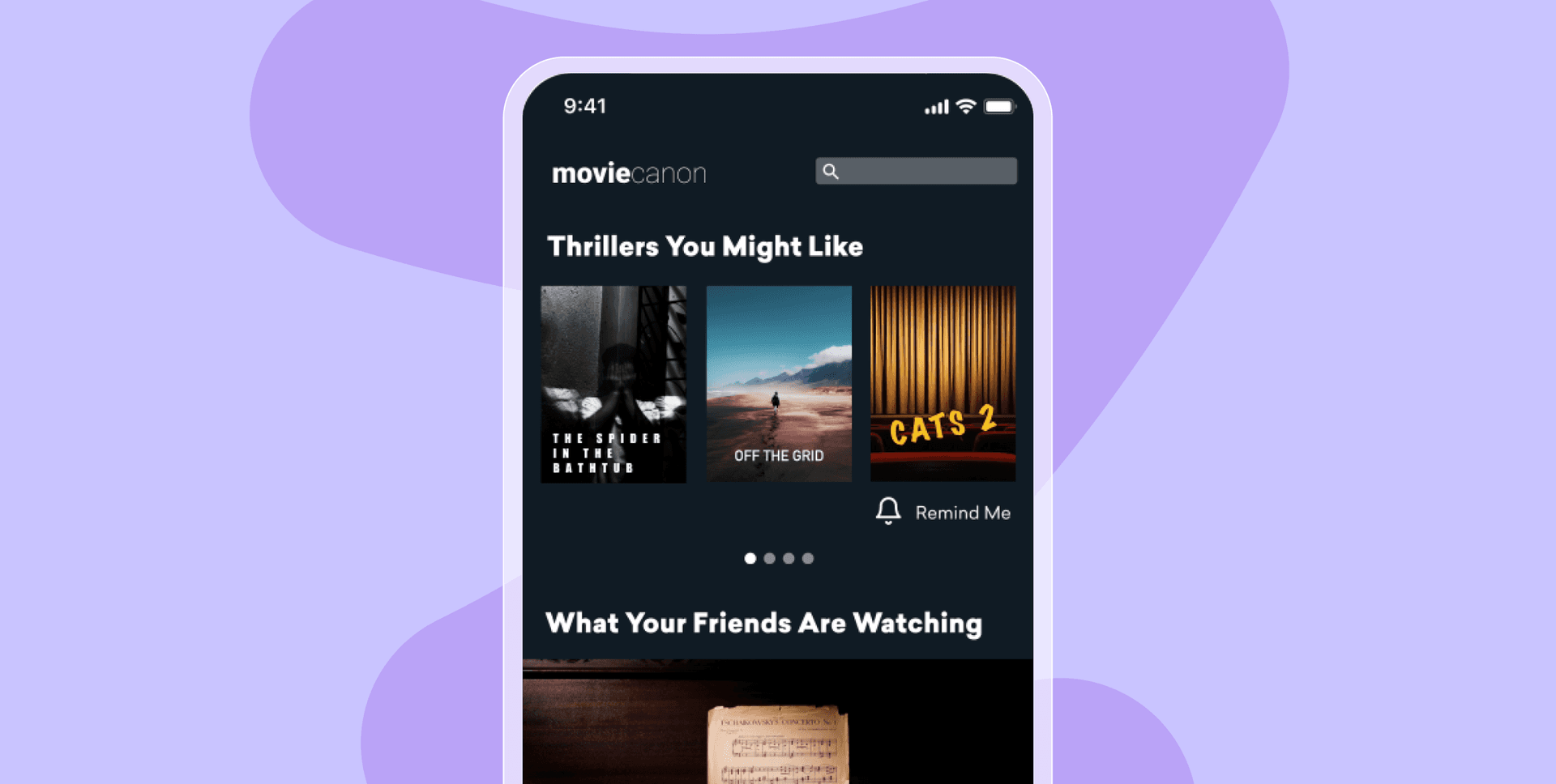
5. With Braze, MovieCanon’s CEP of choice, the company could segment customers and schedule campaign messages, ensuring they went to the right person, at the right time, and on the right channel.
6. As they continued to test and learn, MovieCanon built out more personalized flows, tailored to every step in the customer journey.
5 Real-Life Examples of Customer Engagement
Now that we’ve explored the motivations and benefits of a sound customer engagement program, let’s explore how five (real) brands are leading the way.
1. Wealthsimple: Improving acquisition by showing value
As Wealthsimple, one of Canada’s fastest-growing and most trusted money management platforms, has expanded over the last decade, nurturing and strengthening customer relationships has become ever more important. It’s key to how they activate, monetize, and retain customers. In order to create the kind of personalized, automated customer journeys that deliver on their value, the brand switched to Braze. From there, they effectively leveraged their extensive data to improve every aspect of the customer journey. For instance, they launched a promotional campaign encouraging both new and existing clients to transfer their financial assets to Wealthsimple, successfully working towards their goal of becoming clients’ primary financial relationship.
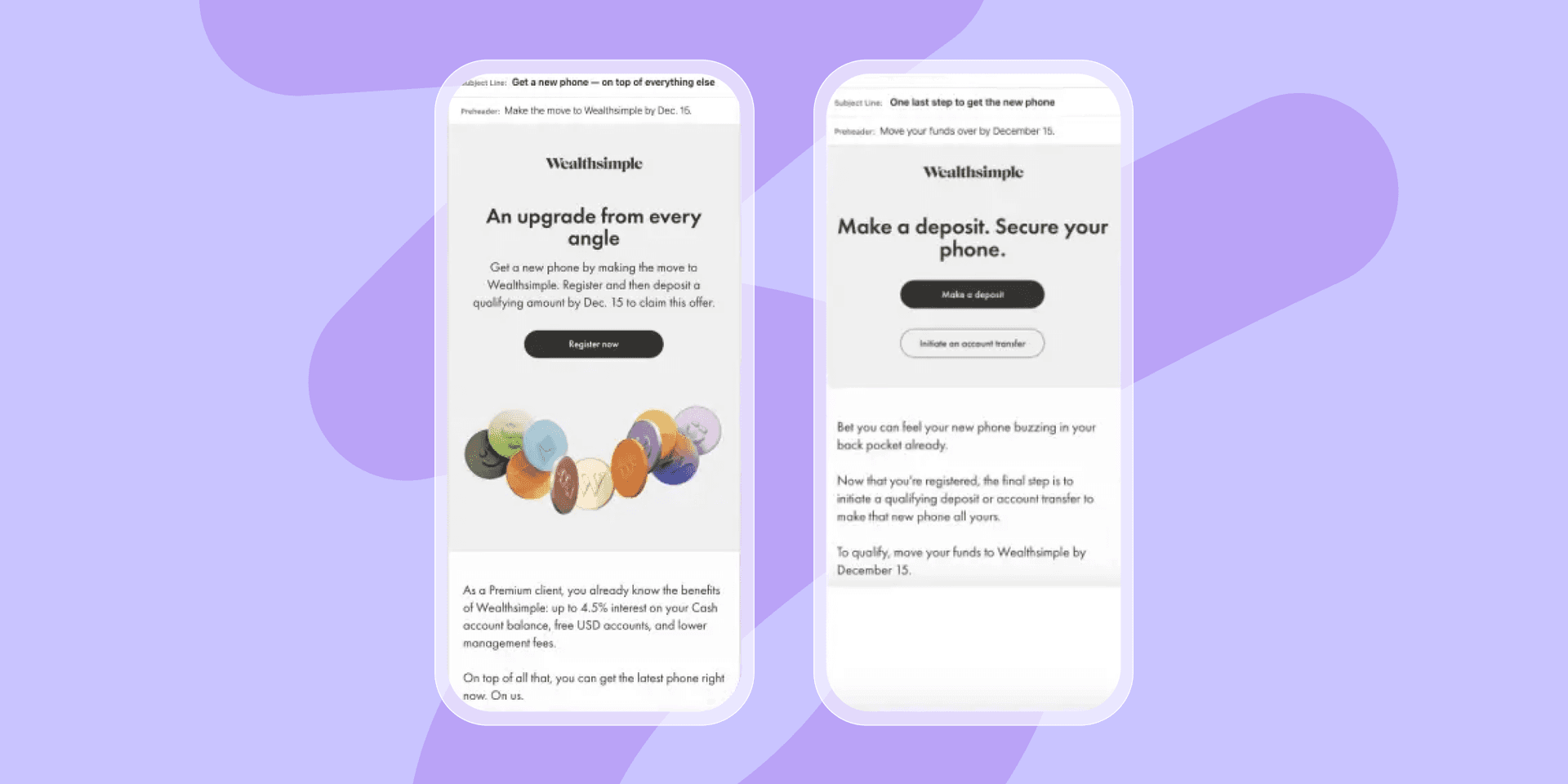
Key metrics:
- 40% increase in team quarterly net deposits, including a record-breaking month
- 20% of clients who received the campaign registered to qualify for the mobile device
- 25% of all participation came from new clients
2. Quizlet: Using personalization to boost brand loyalty
The online learning platform Quizlet wanted a better way to engage their most loyal followers (of about 60 million who sign in monthly). With a cache of data on user study habits and app usage, the company’s growth team looked for a better way to incorporate that data into messaging. Using related content, the team was able to make messages more personally relevant across many channels. This enabled the brand to recommend study sets for individual users based on previously selected courses. All told, Quizlet saw a significant spike in MAU and learning sessions by meeting modern consumers where they were, with the content they expected.
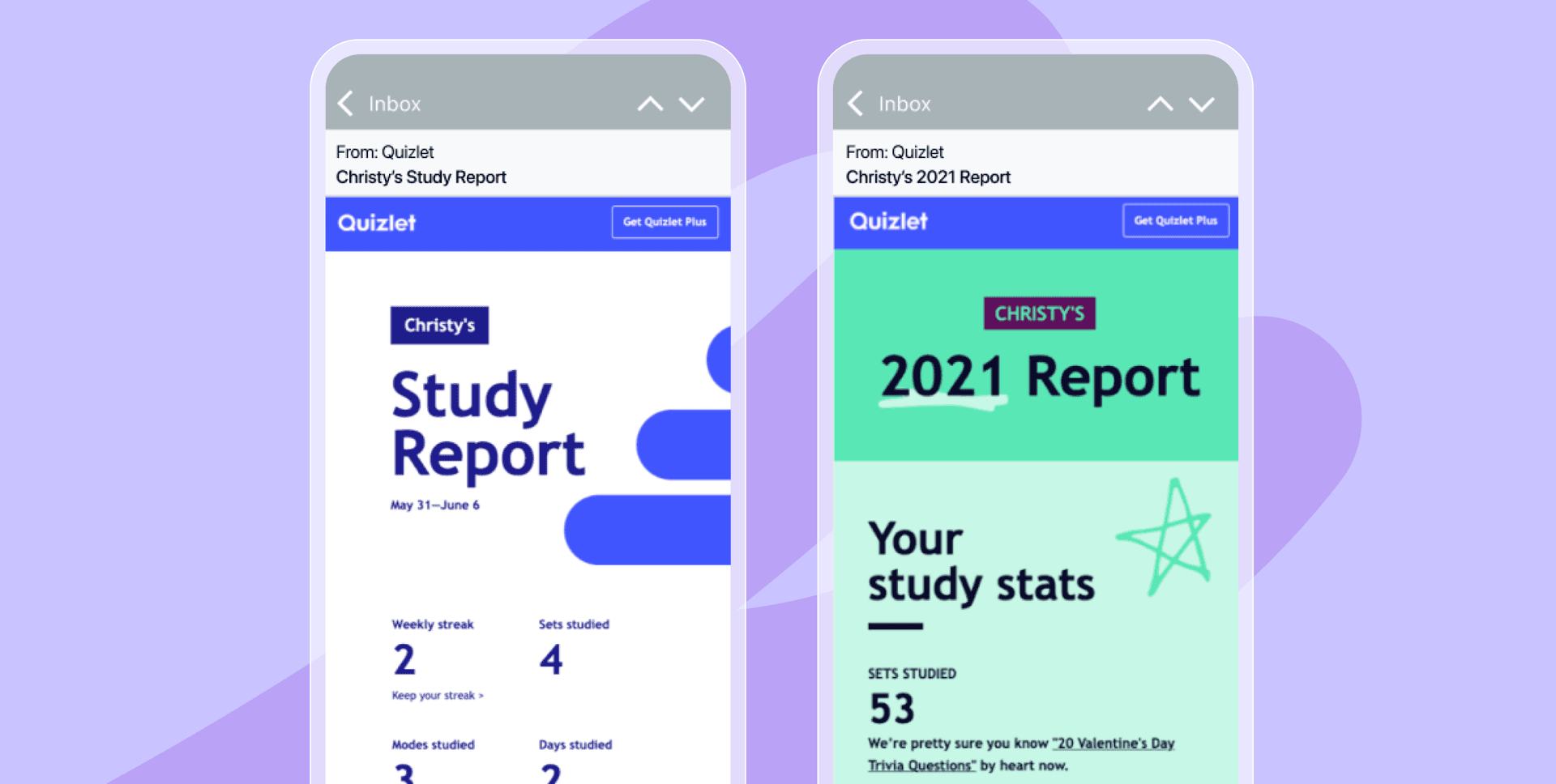
Key metrics:
- 2,500 incremental subscribers
- 2M incremental active monthly users
- 17M incremental learning sessions
3. Canva: Leveraging email to increase user engagement
Graphic design platform Canva uses email in innovative ways to push the limits of what’s possible using today’s technology. They’ve embraced experimentation, iteration, and customer-centricity to deliver more value and keep communications as fresh as possible. What’s their secret to success?
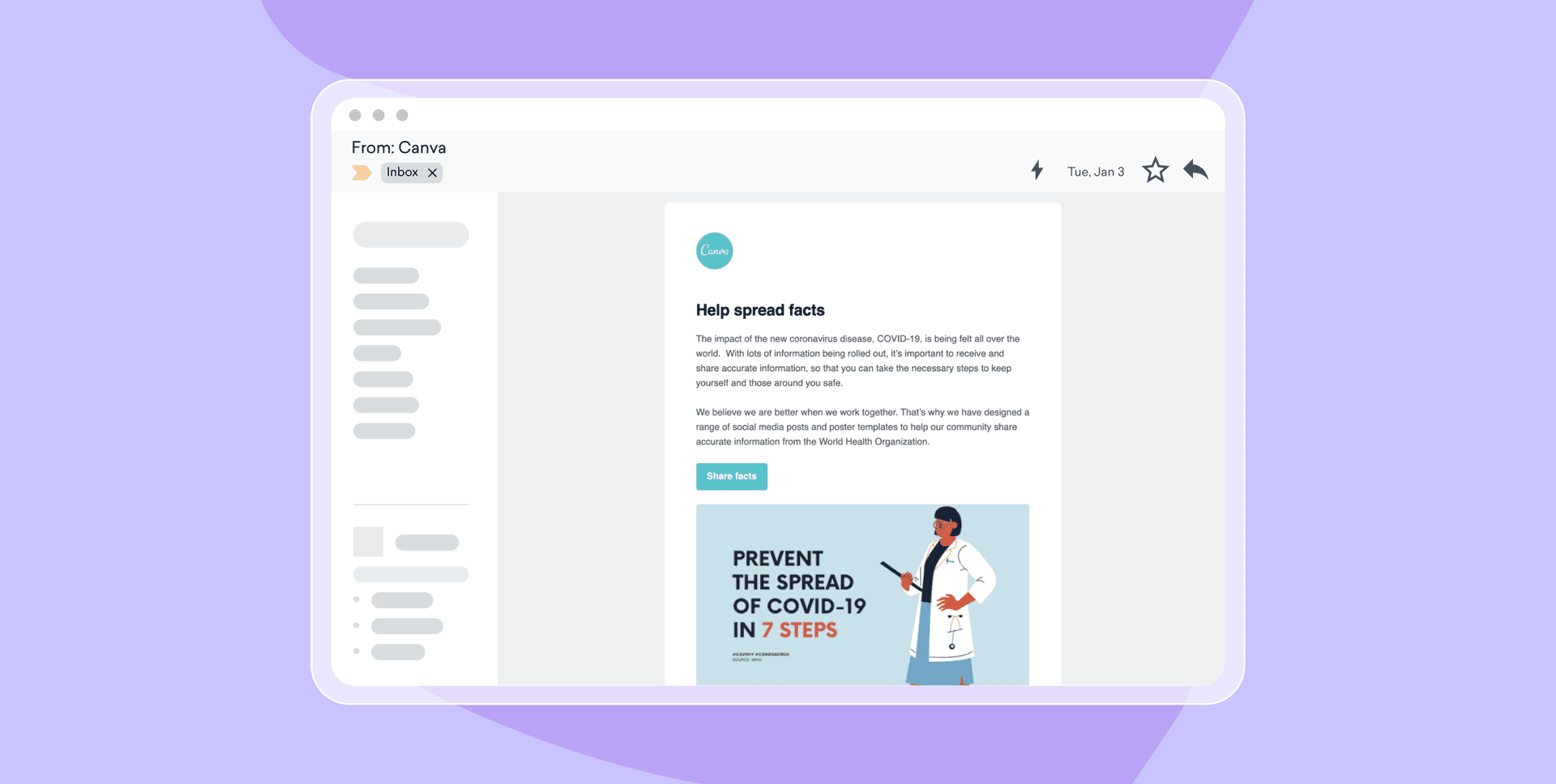
As the world adjusted to stay-at-home orders during the pandemic, Canva set out to put customer needs first. First, they worked to tailor every message based on user languages, interests, and preferences. To deliver helpful content to users during COVID-19, Canva also needed to streamline localization efforts and increase email sends while maintaining 99% deliverability. Using related content, the team pulled in localized, translated content, which saved them precious hours. In practice, that meant using their CEP to initiate an IP warming strategy to safely raise its daily send volume as it scaled from 30 million to 50 million weekly sends. Next, they sent emails to customers full of relevant, helpful content, including a Zoom tutorial centered on uploading custom backgrounds. Using their CEP, this email campaign was seamlessly executed in under five days and auto-translated into 20 different languages. Putting people at the center of their customer engagement program helped Canva support the global design community in unprecedented ways during an unprecedented time.
Key metrics:
- Maintained 99% deliverability despite increased send volume
- Increased overall platform engagement by 2.5%
- Raised open rates by 33%
4. Gympass: Driving revenue, clicks, and new users with personalization and experimentation
Getting on the path to wellness can be overwhelming. Staying motivated is even harder. Gympass wanted to create a seamless experience to help customers create better fitness habits. To do it, they needed customer engagement management that embraced experimentation, automation, and personalization.
With over 50,000 gyms worldwide, their growth team wanted an easy solution to help engage users in more hyper-personalized and beneficial ways.
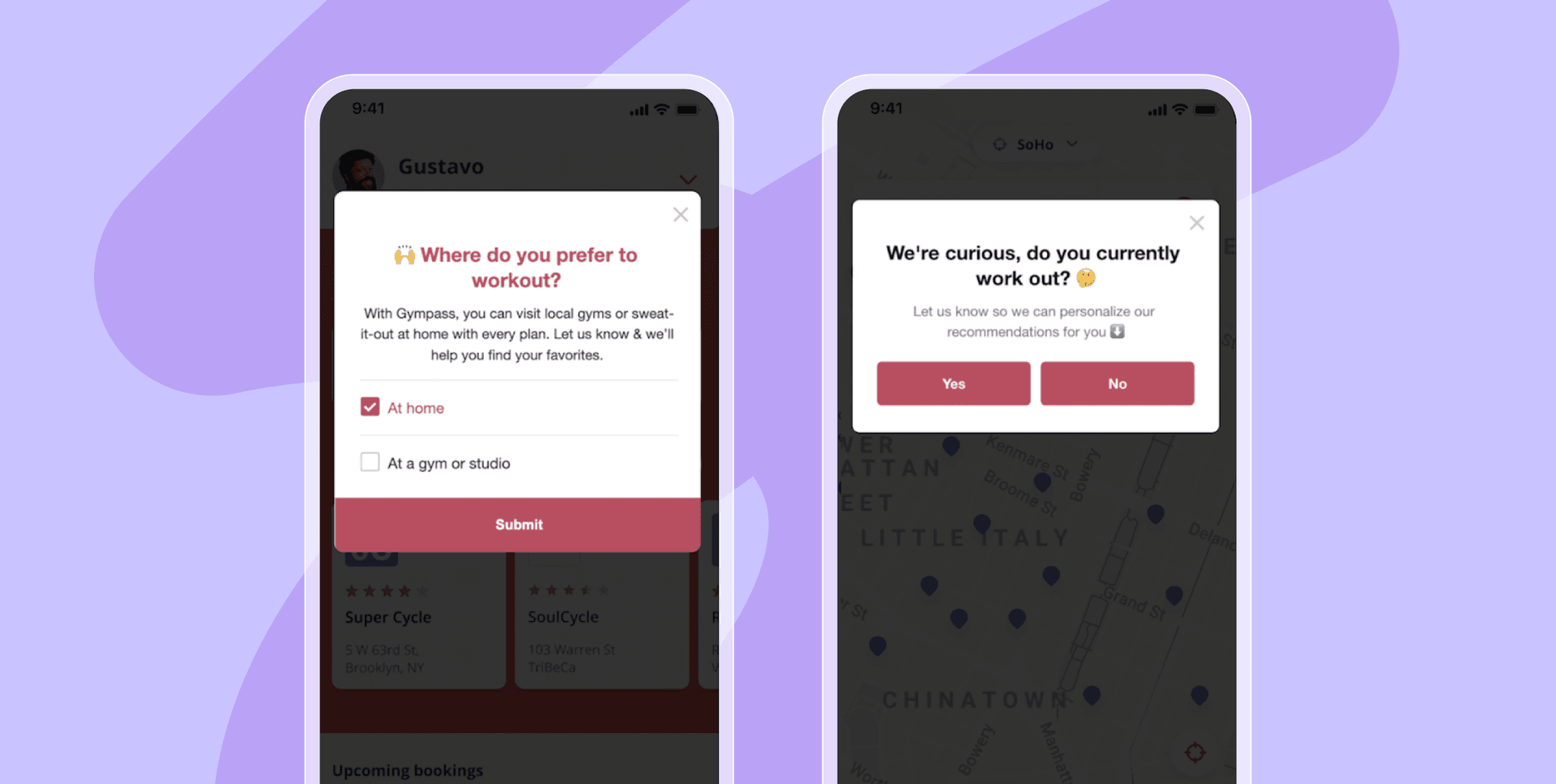
Early on, the team’s strategy revolved around customized messaging campaigns they could execute without much manual work. This would free them up to focus on A/B testing and optimization—not deploying and managing a high volume of campaigns. The team figured that personalizing messaging to individuals throughout the customer journey would be more effective for driving conversions and higher engagement. Using a customer journey orchestration tool, Gympass created a series of multi-staged trips across the lifecycle, each triggered by specific product actions, like when a user creates an account, searches for a yoga session, or explores a partner’s service. But they didn’t stop there. Using this same flow, the brand also triggered in-app messages to survey users about their interests, then used those results to augment individual profiles. From there, Gympass customized campaigns on a deeper level, surfacing workout plan types based on those newly-collected interests. By improving its personalization strategy, the team enjoyed higher revenue from new subscribers and a staggering click rate of 70%. Catering to individuals never looked so good.
Key metrics:
- 25% revenue bump from new subscribers
- 70% jump in click-through rates
- 3X increase in sign-ups
5. Deliveroo: Hungry for cross-functional data at scale
Food delivery service Deliveroo is an expert at scaling customer engagement operations. As a provider of orders from the most popular restaurants around, this brand wisely invested in new technology to help innovate, expand, and explore new tools and channels made to deliver more value for customers and couriers alike. However, embracing a culture of experimentation can only happen with suitable data sources and a good customer engagement program.
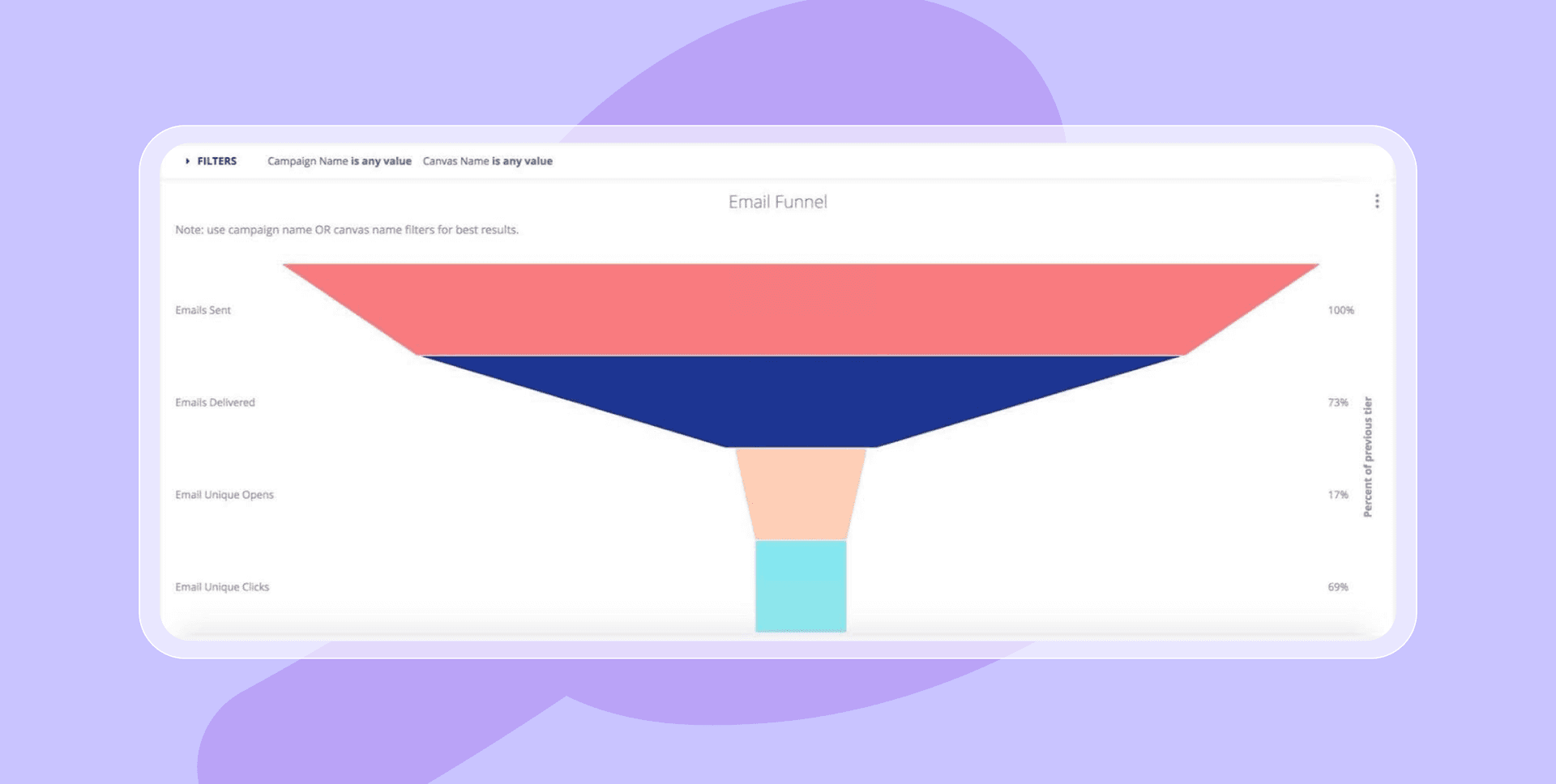
To provide the rich, relevant messages that they hoped customers would crave across channels, their CRM, data, and engineering teams joined forces. From a data perspective, Deliveroo needed the most accurate campaign data in real time to make each experience as personalized and seamless as possible. To do this, they settled on a mix of tools: a customer engagement platform featuring a high-powered data export tool that automatically moves data between the CEP and each layer of their tech stack. Ensuring the fidelity of data was critical to producing frictionless experiences for each customer. Still, data visualization was key to ensure the entire CRM team could enjoy a holistic view of their customers. Using a trusted partner, all campaign data was viewable in a single dashboard—making it possible for Deliveroo to break down the data silos that often slow brands down.
Key metric:
- 8X reduction in time spent fielding data requests
How to Create a Best-in-Class Customer Engagement Campaign
Now that we’ve seen how leading brands worldwide deliver world-class customer engagement experiences let’s explore what that looks like in practice. Below, you’ll find a step-by-step breakdown of crucial tactics to implement to take your customer engagement to the next level.
Make a human connection
Your customers are individuals and want to be treated that way. Personalization is what makes brand experiences compelling. According to McKinsey, “Personalization initiatives can deliver significant value, including on average 10 - 30% revenue uplift and higher customer acquisition rates and engagement.”
To effectively execute a personalization strategy, there are various approaches you can take. The best path forward is to identify your customer engagement goals and strategize ways to deliver on those. Here are a few examples of personalization that show customers you’re putting their needs first.
Name-based personalization
It’s more effective to speak to the individual directly—but how can you easily do it at scale? With the right tools, you automatically pull in each recipient's name from their customer profile and add it to messages whenever you think it adds value.
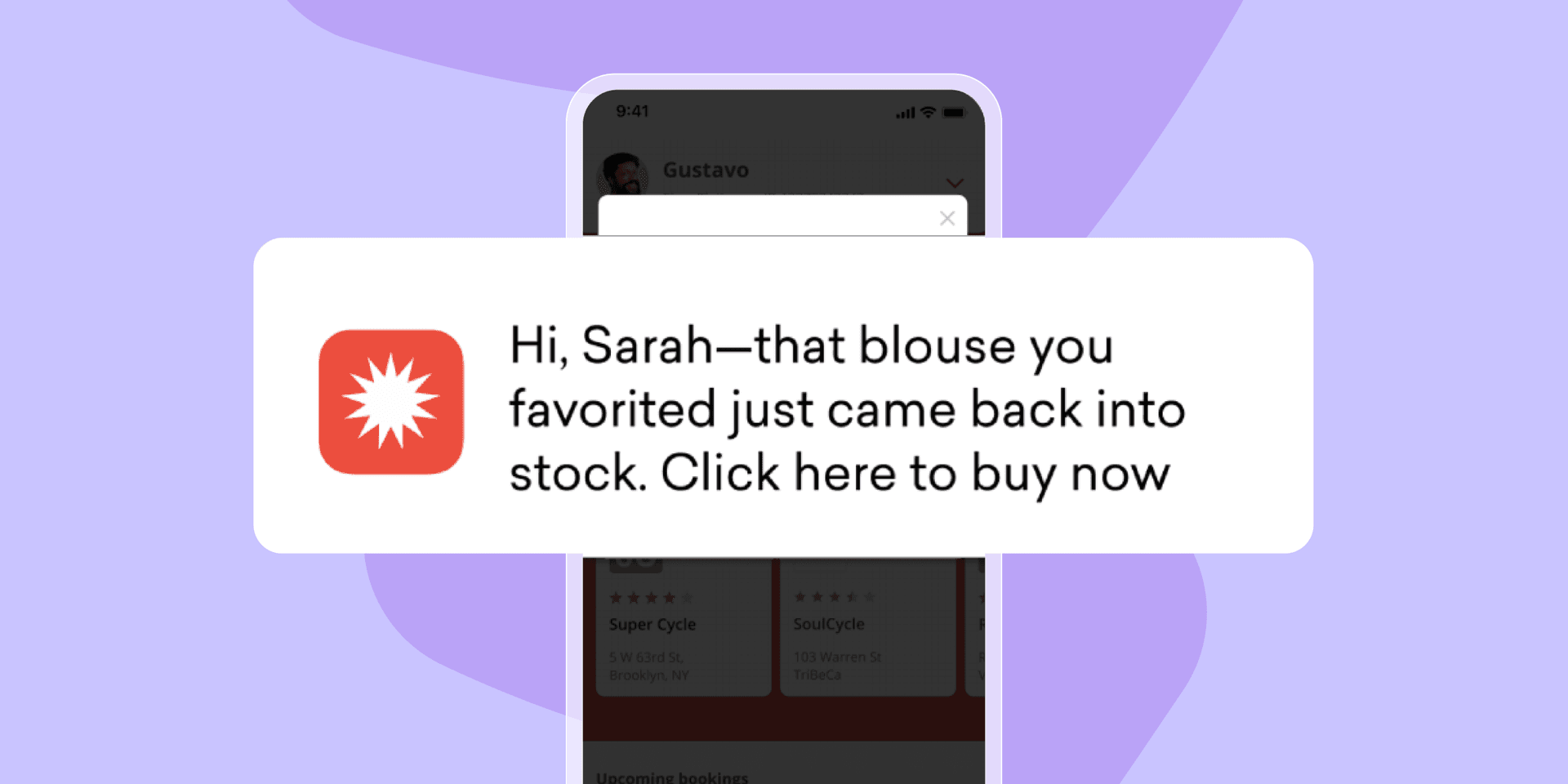
Event- and attribute-based personalization
Leverage the data you have on who they are and what matters to them. For instance, you can modify a push notification with a person’s most-ordered menu items, their clothing size, or countless other things that add value to the messages they receive.
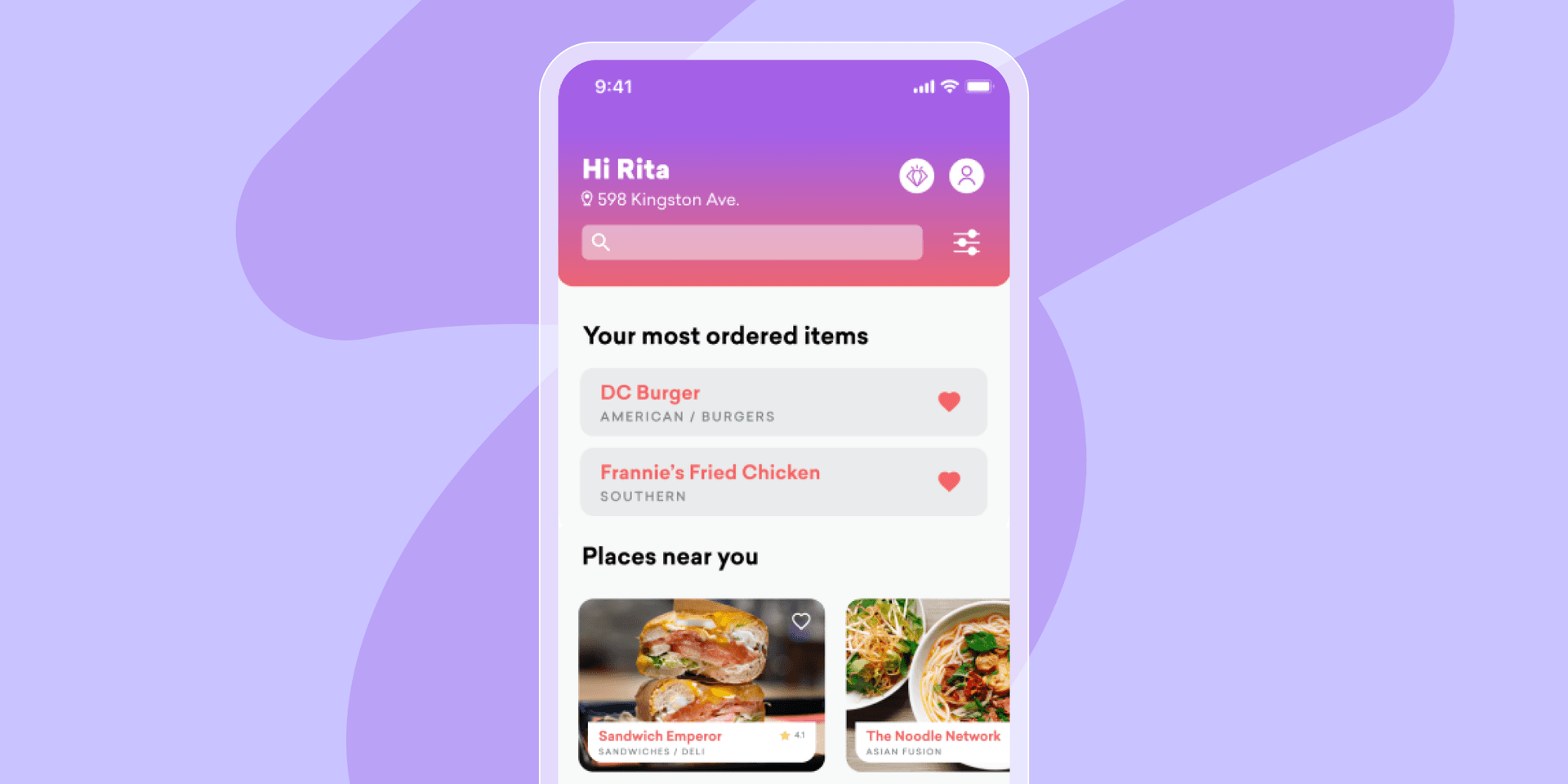
Location-Based Personalization
Good customer engagement means having the ability to respond to each user’s physical location. Personalizing customer interactions based on location is another great way to reach users with content that is relevant to them at that very moment.
For example, offering a coupon when a user is within a given radius of a brick-and-mortar location just might entice them to come in.
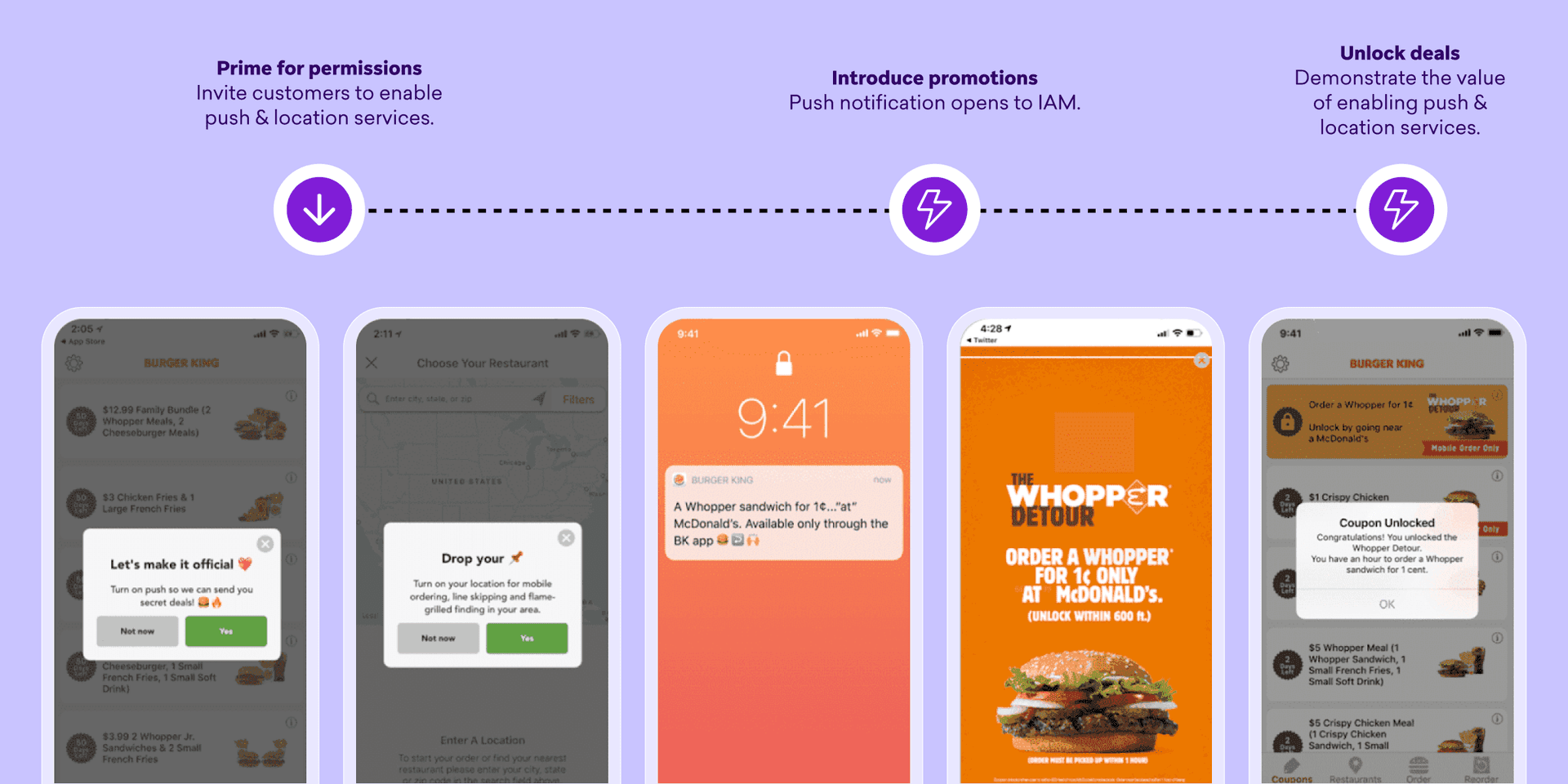
Master Cross-Channel Messaging
To reach customers in the moments that matter most, brands need to deploy a cross-channel approach. Our research found that when brands embrace cross-channel engagement, they see a 55% increase in 90-day retention.
At the core of any cross-channel strategy is finding the right channel mix. We found using cross-channel messages, compared to only in-product messages, led to a 5x increase in customer lifetime value and a 6.4x increase in purchases per user. Think of channels as messengers for the content you want to deliver to consumers. Below, you’ll find an overview of channels used today that are part of effective customer engagement strategies. True cross-channel messaging uses in-product and out-of-product channels to ensure a coordinated customer experience.
Core Messaging Channels
1. Email
Email is the oldest channel around and it’s still one of the most impactful. Use this flexible channel for messages that take up more real estate or benefit from a bold, visual approach.
2. Mobile push notifications
Push notifications are alerts built to grab consumers’ attention on their phone’s home screen and are sent from mobile apps. These are great for time-sensitive or urgent messages you’re nudging users to act on.
3. SMS/MMS
SMS and MMS messages are sent natively via the messaging app on a mobile service. SMS is text-focused, while MMS may include visuals.
4. Web push notifications
Web push notifications reach web visitors much like mobile push notifications. This gives brands the power to reach visitors even when they’re not active on your website.
4. Paid Social/Media
Paid social/media refers to advertising on social media platforms where brands pay to promote their content, reach targeted audiences, and drive engagement or conversions.
In-product channels
1. In-app messages
In-app messages enable brands to send direct messages to active users within an app. This is the perfect vehicle for messages you want customers to see when they’re using your product, like special promotions or relevant product recommendations.
2. In-browser messages
In-browser messages are like in-app messages for web experiences. This flexible channel delivers personalized outreach to visitors who are active on computers.
3. Content Cards
Content Cards are persistent messages within websites and mobile apps that help brands engage active users in unobtrusive, compelling ways.
4. Landing pages
Landing pages are web pages designed for specific campaigns, aiming to convert visitors into leads or customers through targeted actions.
5. Feature Flags
Feature Flags enable teams to toggle specific features on and off for specific audiences, without deploying extra code or submitting an update to an app store.
Emerging channels
1. Messaging apps
Message apps like WhatsApp, LINE, KAKAO, and other regional apps let brands build 1:1 connections at scale thanks to a range of features designed to help businesses build customer relationships through two-way messaging.
2. RCS
RCS or Rich Communication Services, is an advanced messaging protocol that enhances traditional SMS by enabling features like text, voice, video, and file transfers. It allows users to send rich media, such as high-resolution images and GIFs, making it a more versatile option for communication on both Android and iOS devices.
Build Responsive, Data-Driven Experiences
Data drives exceptional customer experiences. Yet, as consumer expectations and global privacy laws and regulations evolve, brands must prioritize compliance while also ensuring the data collected is put to efficient use. With 71% of consumers expecting personalized experiences, you need data to provide cohesive experiences at scale.
1. Be sure you can activate your data.
Data is only valuable if it’s actionable. To act quickly and responsibly and reduce tech costs, brands need a customer engagement solution with real-time processing and data ingestion. Working with your engineering, data science, IT, and product teams, you can take advantage of your data in real time.
Types of data you might need to activate for your customer engagement program:
- First-party data
- Data from data warehouses
- Data from point solutions
- Analytics
- Data from backend systems
- Data from eCommerce platforms
- Data about content usage
- Data from legacy apps
- Device data
2. Prioritize performance at scale.
Broken experiences caused by batch processing are worth avoiding in any customer engagement strategy. Get ahead by looking for a customer engagement solution that scales customer experiences in real-time without latency. These platforms should also support vertical integration, enabling your company to unify, activate, and distribute data without friction.
3. Unify your customer engagement.
Today’s consumers engage with brands across various devices and digital platforms and they’re highly attuned to inconsistencies. Unfortunately, most messaging platforms start as point solutions to triage specific channels but aren’t built to integrate with other technologies. This can add unwanted complexity to tech stacks. Teams can avoid this by seeking a solution that provides a single, unified view of each customer. This solution should also be an all-in-one engine for sending messages across multiple in-product and out-of-product channels so brands can customize communications on an individual basis.
Top 5 Customer Engagement Metrics to Measure
Exceptional customer engagement starts with extraordinary data. But for marketers looking for more ways to drive results, here’s an overview of the metrics used to measure performance.
1. Conversion rate
A conversion is when a user takes a desired action due to a marketing campaign. Examples include making a purchase, downloading an app, or subscribing to a mailing list. Some brands focus on conversions directly tied to revenue while others look for community growth or content consumption. Conversions measure the most critical actions based on your customer engagement efforts, even more than awareness or interest metrics. While conversions directly tied to revenue are often prioritized, non-revenue-focused conversions—like social follows or content engagement—are also valuable for long-term growth.
- Tip: Test different messaging, visuals, and calls-to-action (CTAs) to see what resonates most with your audience. Track conversion rates across different channels to understand where users are most likely to convert.
2. Retention rate
This metric tells you what percentage of customers you’re retaining and helps you visualize how many customers you’re losing to churn. Calculating retention is actually pretty nuanced, so check out that article to dive deep into the process. A high retention rate often signals a strong product-market fit and an engaged user base. On the other hand, churn—the rate at which users stop engaging—can indicate areas needing improvement.
- Tip: Try engaging users with personalized content, loyalty rewards, or new product features. Analyzing churn alongside retention can help you spot patterns, like seasonal fluctuations or trends by user segment.
3. Customer Lifetime Value (CLTV)
This metric represents the total revenue a business can expect from a customer over the entire duration of their relationship. CLTV offers insight into the long-term value of engaging customers effectively, allowing marketers to focus on strategies that maximize this value rather than just acquisition.
- Tip: Use CPA (cost per acquisition) alongside customer lifetime value (LTV) to assess the sustainability of acquisition costs. Channels with a high CPA but also a high LTV can be more cost-effective in the long run than those with a lower CPA but minimal long-term engagement.
4. Monthly active users (MAU)
MAU is a metric used to measure engagement. MAU provides the number of individual users engaged with your app each month instead of the total number of monthly sessions. This means each person is counted only once, whether they use the app once or dozens of times throughout a month.
- Tip: Track DAU (Daily Active Users) alongside MAU for a more granular view of engagement. DAU/MAU ratios can highlight stickiness—how often users return—informing retention strategies.
5. Click-to-open rate
For brands with strong email programs, click-to-open rate is measuring the percentage of users who clicked on a link after opening an email. By dividing unique clicks by unique opens, CTOR provides insight into how compelling your email content is and how well it aligns with user interests. Higher CTORs often correlate with well-targeted, engaging email campaigns.
- Tip: Experiment with subject lines, personalization, and content structure. Segmenting audiences based on behaviors or interests can yield more relevant content, driving up CTOR.
While these metrics are broadly informative and useful, make sure you’re considering your brand’s specific needs to decide if different metrics would be more relevant or actionable for your engagement programs.
3 Ways a Customer Engagement Platform Maximizes Your Results
To evolve with consumers' rising expectations, businesses must buy into the latest customer engagement technologies and tactics. The novelty of hearing from beloved brands has worn off for many consumers, and there’s simply too much noise to hear you. The best way to bypass this is to avoid generic marketing. That means ditching batch-and-blast automation and weaving personal details into every touchpoint to show users their needs and interests are top of mind for your brand.
Here are three ways the right customer engagement platform can help you maximize your investment:
1. Create deep relationships with customers
New technology is often the best way to humanize your communications. Machine learning, Connected Content, and Liquid personalization automate and elevate brand interactions by speaking to users on a deeper level. Brand loyalty is the goal, but you need the right solution to spark those personalized experiences, especially at scale.
Research shows that using these “humanized” messaging strategies can lead to a 119% increase in mobile push open rates and a 28% increase in email open rates. Moreover, these customers are more likely to stick around longer. They’re 2.1x more likely to love a brand, 1.8x more likely to recommend it, and 1.8x more likely to purchase from it.
2. Unify data and cross-channel communication into one platform
A comprehensive customer engagement platform enables marketers to streamline their efforts by unifying data and cross-channel communication in one place. With a no-code customer journey orchestration tool, teams can easily create complex journeys, craft and deploy personalized messages, and conduct A/B tests without relying on extensive tech support.
Additionally, marketers are leveraging artificial intelligence to enhance their decision-making processes. Predictive tools can identify customers at risk of churning or those likely to make a purchase, empowering teams to act swiftly and effectively. By adopting a best-in-class customer engagement platform, marketing teams can save valuable time and redirect their focus toward growth strategies, ultimately driving better results across all channels.
3. Drive ROI faster
As many consumers cut back on spending, companies are turning to resilient customer engagement strategies to thrive. Businesses that increase customer retention by 5% see profits increase from 25% to 95%. Investing in a scalable and flexible CEP gives brands a competitive edge for future growth by leveraging data to effectively activate, engage, and retain customers for the long haul. For instance, if a brand wants to cut overall acquisition costs, then ramping up customer engagement serves to create a more consistent and scalable business pipeline. The right customer engagement platform also enables teams to carry out test-and-learn strategies to move faster and more efficiently.
Top Customer Engagement FAQs
Customer engagement is often confusing. Here are some easy answers to the questions we hear most often.
Is customer retention more important than customer acquisition?
While customer acquisition costs continue to rise, it’s become easier and more cost-effective to engage, retain, and monetize your existing customers. Think about it: Why would you keep paying to acquire new customers when you can work with those who’ve already purchased from you? Research shows that retaining even 5% more of existing customers can boost profits by 25 - 95%.
Is customer engagement time-consuming?
Not necessarily. You can make your customer engagement as simple or sophisticated as you’d like without writing a single line of code. A flexible, vertically integrated interface can help you coordinate any channel strategy your company has in mind. From a one-time push notification to a cross-channel lifecycle journey, you’ll need a customer engagement platform built to help—wherever you’re at. Let’s say your strategy is simple today, but you want to expand in the future. The right tool will grow with your business.
Is customer engagement only about mobile marketing?
Customer engagement is centered around building lasting relationships with your customers, no matter what channels they prefer. For some companies, your mobile app might be the heart of the customer experience, so your engagement strategy might be firmly rooted in that space. But for many leading businesses, incorporating email or web pushes adds cohesion to the customer journey. It’s less about the channels you use and more about the relationships you want to build.
What is CRM customer engagement?
CRM customer engagement refers to the strategies and practices that businesses use to interact with customers through their customer relationship management (CRM) systems. It focuses on building strong relationships by personalizing communication, understanding customer needs, and enhancing overall customer experiences throughout their journey with the brand.
How can a customer engagement strategy benefit businesses?
A customer engagement strategy can enhance brand loyalty, improve customer satisfaction, and drive repeat purchases by fostering meaningful interactions with customers. This ultimately leads to increased revenue and a stronger competitive advantage in the market.
What tools are needed to implement a customer engagement strategy?
To implement a customer engagement strategy, businesses typically need tools for data analytics, customer relationship management (CRM), marketing automation, and multi-channel communication. These tools help track customer behavior, personalize interactions, and streamline outreach efforts.
How can Braze help companies implement their customer engagement strategy?
Braze provides a robust platform that enables companies to create personalized, data-driven marketing campaigns across multiple channels, such as email, push notifications, and in-app messaging. With features like real-time analytics and automation, Braze helps brands engage customers effectively and optimize their marketing efforts.
Why is increasing customer engagement important?
Increasing customer engagement is crucial because it leads to higher customer retention, improved brand loyalty, and greater lifetime value. Engaged customers are more likely to advocate for the brand, provide valuable feedback, and contribute to sustainable business growth.
Featured Resources
For more thought leadership, tips, and tricks related to customer engagement, check out our resources:
Related Tags
Be Absolutely Engaging.™
Sign up for regular updates from Braze.
Related Content
View the Blog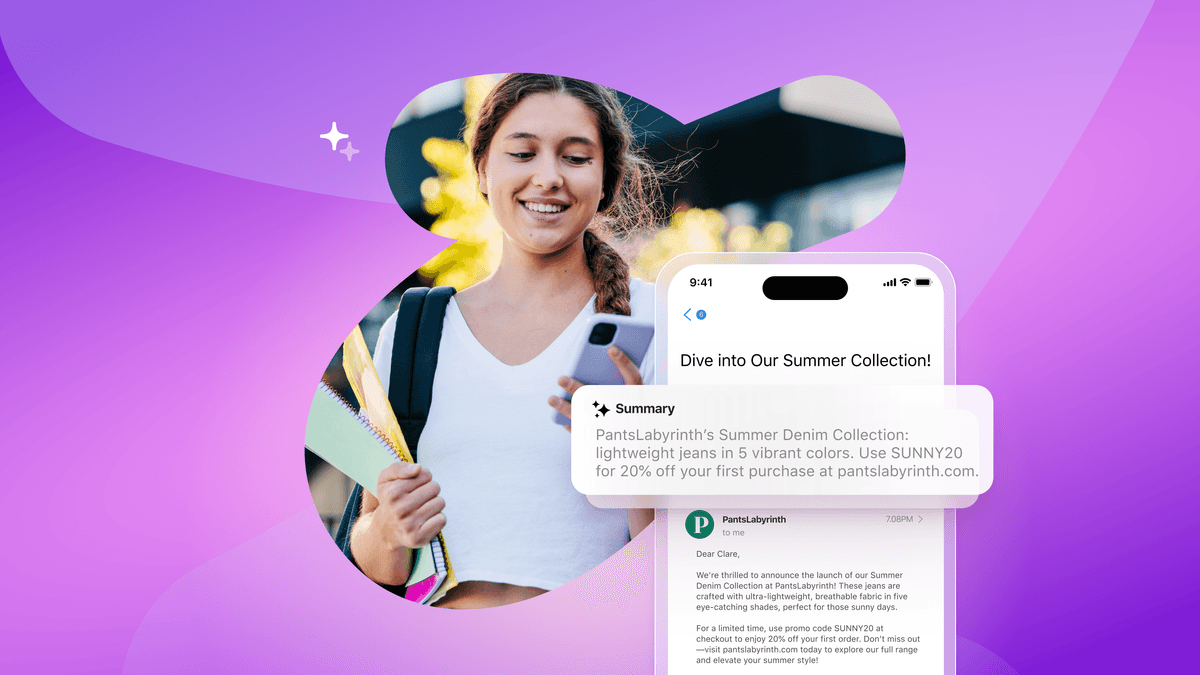
How Android 16 and iOS 26 are reshaping customer engagement

Haley Trost
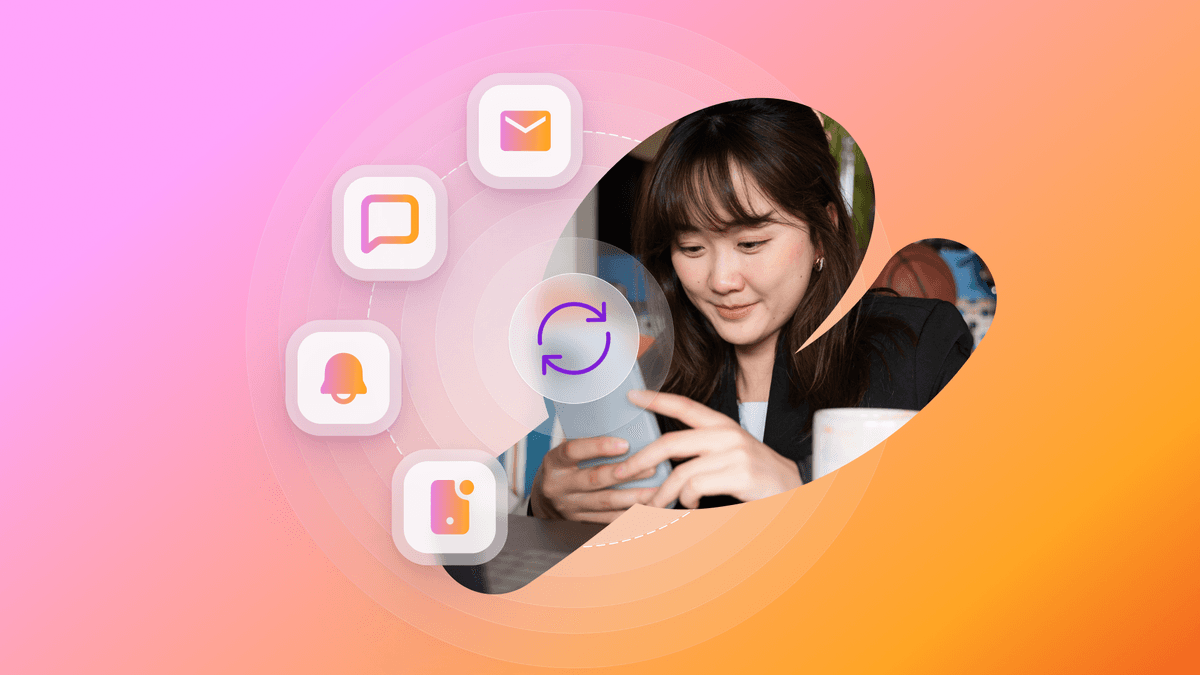
Proven customer retention strategies for building loyalty and reducing churn
July 02, 2025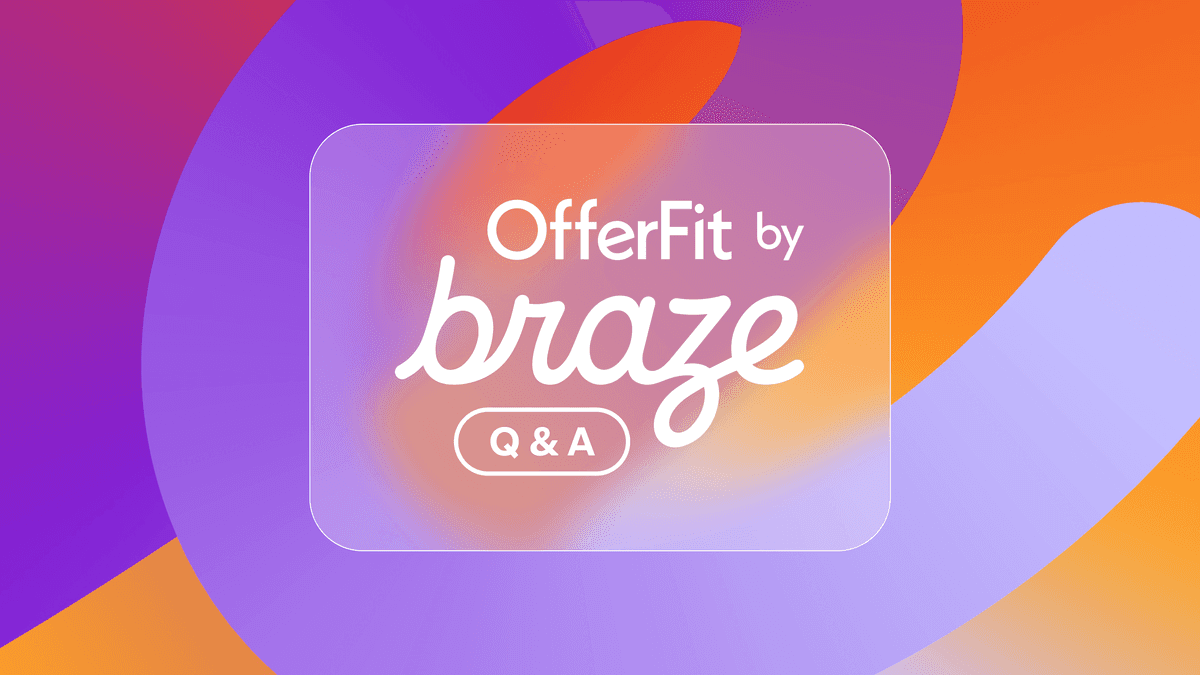
Introducing OfferFit by Braze: Answering burning questions
